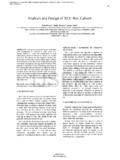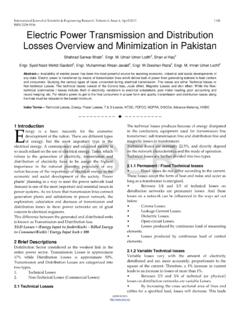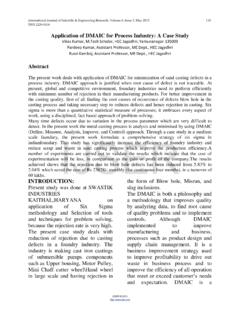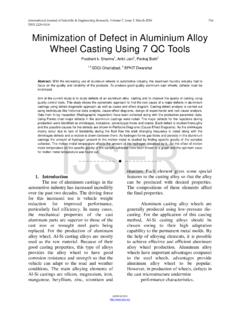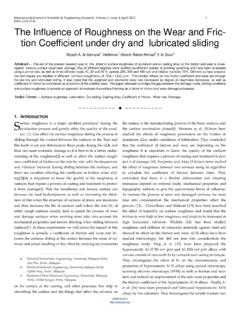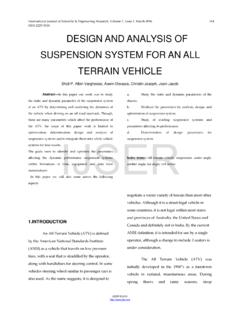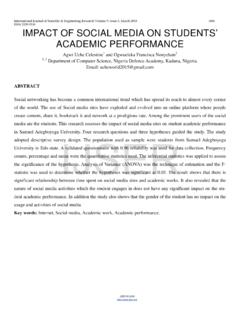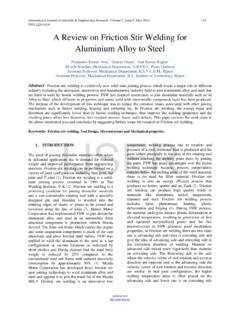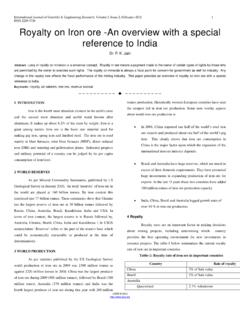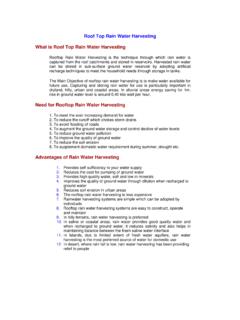Transcription of APPLICATIONS OF GREEN CHEMISTRY - IJSER
1 International Journal of Scientific & Engineering Research Volume 8, Issue 6, June-2017 63 ISSN 2229-5518 IJSER 2017 APPLICATIONS OF GREEN CHEMISTRY 1Dr Shalini Jaiswal, 2 Deepanshu Kapoor, 3 Abhishek Kumar Kanojia, 4 Kusum Sharma Amity University Greater Noida (India) Abstract GREEN CHEMISTRY is the synthesis of substance in such a way that is proper, non-polluting and protected and which requires lowest amounts of resources and energy but generating slight or no waste material.
2 The GREEN CHEMISTRY is required to minimize the harm of the nature by anthropogenic materials and the processes applied to generate them. GREEN CHEMISTRY indicates research emerges from scientific discoveries about effluence responsiveness. GREEN CHEMISTRY involves 12 set of values which minimize or eliminates the use or production of unsafe substances. Scientists and Chemists can significantly minimize the risk to environment and health of human by the help of all the valuable ideology of GREEN CHEMISTRY .
3 The principles of GREEN CHEMISTRY can be achieved by the use environmental friendly, harmless, reproducible and solvents and catalysts during production of medicine, and in researches. The use of UV-energy Microwave irradiation in is also significant way to achieve the goal of GREEN CHEMISTRY . This paper explain ideology, certain examples and application of GREEN CHEMISTRY in everyday life, in industry, the laboratory and in education. Keywords: Clean CHEMISTRY , GREEN catalyst, Environment, Eco-friendly Dry Cleaning, microwave preparations 1.
4 INTRODUCTION Pharmaceuticals Industries are using toxic chemicals and extra difficult process which produces comparatively a large amount harmful substance. These harmful substances cause bad impact on surroundings and nature1. The approach of GREEN CHEMISTRY provides environmentally friendly way to replace harmful solvents and technologies, so prevent pollution 2-4. GREEN CHEMISTRY concept The GREEN CHEMISTRY has emerged as research program in the US which arises from collaborative efforts of university unit, self-governing research crowed, business, technical community and legislative agencies, to decreasing pollution.
5 The new approach5-10 introduces in GREEN CHEMISTRY synthesis, dealing out and relevance of chemical material in such a way as to minimize the risk to environment and health of human. This advanced access is as well called: 1. Eco-friendly CHEMISTRY 2. Clean CHEMISTRY 3. Atom wealth 4. Benign design CHEMISTRY GREEN CHEMISTRY involves 12 set of values projected by Anastas and GREEN CHEMISTRY gives directions to expert chemists to execute new substance, modern production and modern scientific processes.
6 The main idea to protect the environment GREEN CHEMISTRY is generated from first principle. Whereas 11 principles are paying attention to make environment eco-friendly. 2. PRINCIPLES OF GREEN CHEMISTRY GREEN science is an exceedingly compelling way to deal with contamination aversion as it applies creative logical answers for certifiable natural circumstances. The accompanying 12 standards of GREEN CHEMISTRY give an approach to scientific experts to execute GREEN chemistry11.
7 Waste Control It is perfect to forestall squander than to take care of waste after it has been produced. Atom effectiveness Engineered planning must intended to enhance the all supplies utilized as element of procedure into product Application of non- destructive of reagents This incorporates the utilization of reagents and manufactured strategies that decreases the hazard and delivers eco-accommodating items that has no awful effect on human and atmosphere. IJSERI nternational Journal of Scientific & Engineering Research Volume 8, Issue 6, June-2017 64 ISSN 2229-5518 IJSER 2017.
8 Safer Chemicals Scheming Chemicals and reagents should accomplish their coveted ability while limiting their harmfulness. Safer Solvents and Auxiliaries Broadly utilized solvents in unions are lethal and unstable liquor, benzene (known cancer-causing), CCl4, CHCl3, perchloroethylene, CH2Cl2. These have now been supplanted by more secure GREEN solvents. Design for Energy Efficiency Vitality requirements of synthetic procedures must perceive for their ecological and monetary effects and should to be limited.
9 Use of Renewable Feed stocks It is wanted to use crude materials and feedstock that are sustainable, however in fact and monetarily practicable. Referring to the case of sustainable feedstock which incorporate agrarian items and exhausting feedstock incorporate crude supplies that are extracted from non-renewable energy sources (oil, gaseous petrol or coal). Shorter combinations Superfluous derivatization should be limited or managed a strategic space if possible and such strides require additional reagents and can produce squander.
10 Use of Catalytic instead of Stoichiometric reagents Impetuses are utilized as a part of little sums and can complete a solitary response commonly as are desirable over stoichiometric reagents, which are utilized as a part of overabundance and work. This will improve the selectivity, lessen the temperature of a change, diminish waste produced by reagent and conceivably keep away from undesirable side responses prompting a spotless innovation Design for dreadful conditions Compound items ought to be planned so that toward the finish of their capacity they separate into harmless corruption items and don't hold on in nature.
